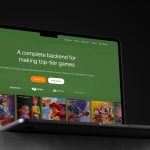
Web design has seen a huge evolution in recent years, with accessibility and inclusion front of mind in the offline world impacting a more human side of software development. This means rethinking the approach to design, ensuring that the steps within processes address accessibility issues. Yet some tech companies are stuck in a previous era, before inbuilt product accessibility and their websites remain inaccessible to all users, particularly those with disabilities.
According to The Click-Away Pound Survey, 71% of website visitors with a disability will leave a website if it is not accessible. Organisations can’t afford to end up in a situation where tech designers have built an app which a huge subset of users can’t access or utilise effectively. Even software companies that embrace an accessibility-first mindset still manage to overlook areas which can benefit users. Tech is still lagging in the inclusion revolution and today’s tech designers must approach all projects with an accessibility-first mindset to benefit all users.
What does accessibility really mean?
These days normal design should equal accessible design, which means designing apps with a user interface that all users can navigate comfortably and easily, with a navigation system and content that’s in a logical order. Ease of use is paramount to the success of an experience or app.
We all make use of accessibility features, most of the time without even realising it. This could be switching to dark mode, zooming in or adjusting text size in a Web browser, or dictating text into Siri – we’re constantly already benefitting from the device’s accessibility features.
Apps that do not have the expected behaviours are frustrating to the average user and crippling to those who need accessible assistance. A disability can be permanent or temporary. It can mean anything from simply needing to wear glasses, to dyslexia, to needing to navigate the computer differently for a few weeks after breaking an arm to far more complex conditions. Even a parent holding a baby in one arm, might also benefit from a more accessible website.
Barriers to accessible tech design
Common roadblocks holding back accessible tech design are speed, cost and some common front-end mistakes. In efforts to complete a project as quickly and cheaply as possible, an organisation might overlook accessibility from the project’s outset – and retrofitting accessibility features into already launched software isn’t an effective option.
Some DevOps teams believe that designing an accessible website or app is harder than it is. But many popular content management systems have accessibility built into the HTML tags of their drag-and-drop functionality. From there, organisations will just need to consider things like the colours they’re choosing and adding alt-text themselves. This can be done even if you’re not the person who built the software. For those with the budget to spend, there are software programs available that will assess your website’s accessibility while it is built.
Recommendations to make websites and apps accessible
Truly accessibility-first design means building in accessible design elements into our apps. The following considerations are critical when designing for universal accessibility:
· Eradicate bias in tech design
It’s important for mobile design and development teams to conduct usability tests and have conversations with a broad variety of users to obtain different perspectives. UX designers and software developers approach problems from the context of their own lived experience. Conducting UX research helps to break down the assumptions, habits, and biases that a team has unintentionally adopted and encourages thinking about what-ifs and what-abouts earlier in the design and development process.
· Ensure squeaky clean, semantic markup
Employing user-interface elements appropriately for Web browsers can be the most powerful thing to make apps more accessible. Without always having the luxury of a pure design phase and mostly a rough idea of the product requirements, the user interface (UI) is established during the process of creating the HTML markup. It’s important to ensure markup is squeaky clean and ensure that the app’s behaviours are consistent with users’ expectations for the devices on which it is deployed.
If an app or Web site doesn’t behave as users expect it to, they’ll quickly avoid it, so keeping mobile devices’ native behaviours, animations, and responses in mind is vital when designing and building Web apps.
· Swipe left on frustrations
Apps that developers have built for the Web and deployed as mobile apps can cause user frustration. These include having to continually pinch and zoom to view a user interface or read its text, and form fields that are half the necessary width, preventing users from seeing what they type. Swipe gestures on mobile apps might trigger tricky behaviours that are different from what users expect.
· Use colour appropriately
Use of colour is vital in software design. You must ensure that the colours you use have high value contrast and do not cause any colour-contrast effects, so users can easily see and read the elements on a page. Contrast ratios on text and background colours should be checked for legibility. It’s also important to make sure colour isn’t the only way in which you communicate particular information.
Understanding issues of people who have colour-deficient vision can help inform appropriate design. For example, don’t rely on changing a field’s border to green or red to inform users whether their input is correct or incorrect. You can use colour to reinforce information, but text, iconography, or other forms of communication should always accompany the use of colour to clearly convey information.
· Consider tricky touch zones
For mobile devices, it’s also important to think about touch zones. If users have limited use of their hands or a tremor or other issue that reduces their fine-motor control, touch and tap-based interactions can be tricky. It’s important to allow a margin of error around smaller touch targets such as checkboxes, ensuring that an interaction still gets triggered even when users don’t tap exactly where they should. We must also think about the placement of UI elements and consider how easily users can reach them. Considerations include the impact of using a device with one or two hands, viewing in landscape or portrait mode, and the user’s hand size, mobility, and flexibility.
· Normalising accessible design
Every software company has its standards – the Progress’ Kendo UI team won’t release a component out of beta until it has met all accessibility requirements, and teams like this are game changing in accessibility for mobile design. Standards can vary from having an accessibility checklist to hiring an accessibility designer, but having a clear position on improving accessibility of designs is critical to modern software development. Ensuring that websites and apps are built to the highest Web Content Accessibility Guidelines (WCAG) will give the business strong credentials.
· Engage with your user community
User communities are driving change with their attitudes – such as becoming more aware of the way that certain characters or emojis appear on screen readers. Getting feedback from users is a great way to innovate – at Progress, we encourage users to message through our feedback portal if they have any accessibility concerns or ideas for improvement. Accessibility is never fully achieved – it’s a team effort, and can always be improved with more open dialogue.
Promoting accessibility for all
Accessibility for design is the current standard for UX design and tech designers are beginning to realise how crucial accessibility is. Creating real change requires understanding users’ needs and changing the mindset from accessibility-last, to accessibility-first for the best UX design.
With this shift change, the next era of Web design should see accessibility-first approaches with development teams continually striving to be more inclusive and creating spaces that are accessible to everyone.
(Photo by Joanna Kosinska on Unsplash)

Looking to revamp your digital transformation strategy? Learn more about Digital Transformation Week taking place in Amsterdam, California, and London, and discover key strategies for making your digital efforts a success.







